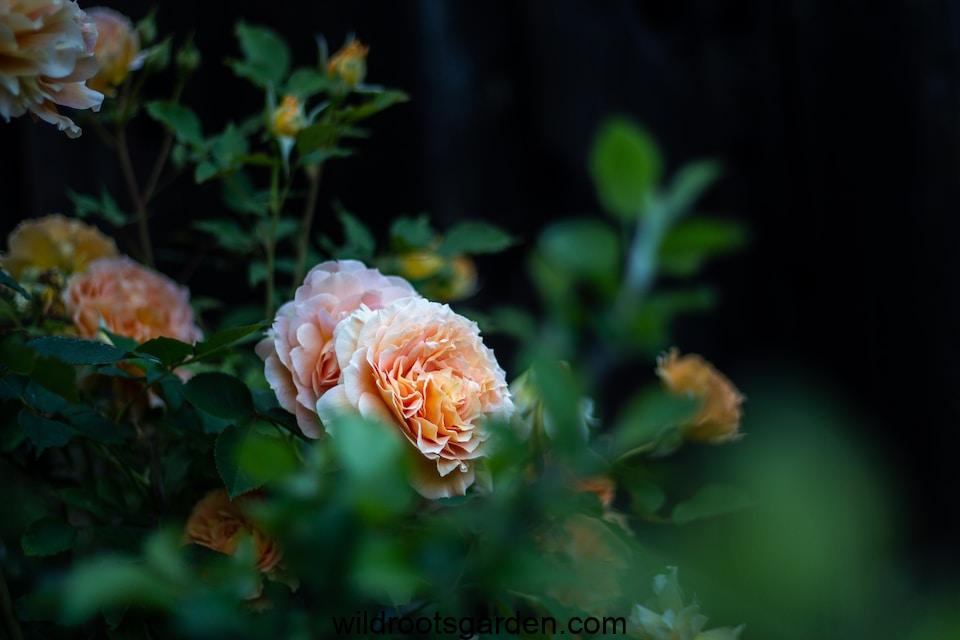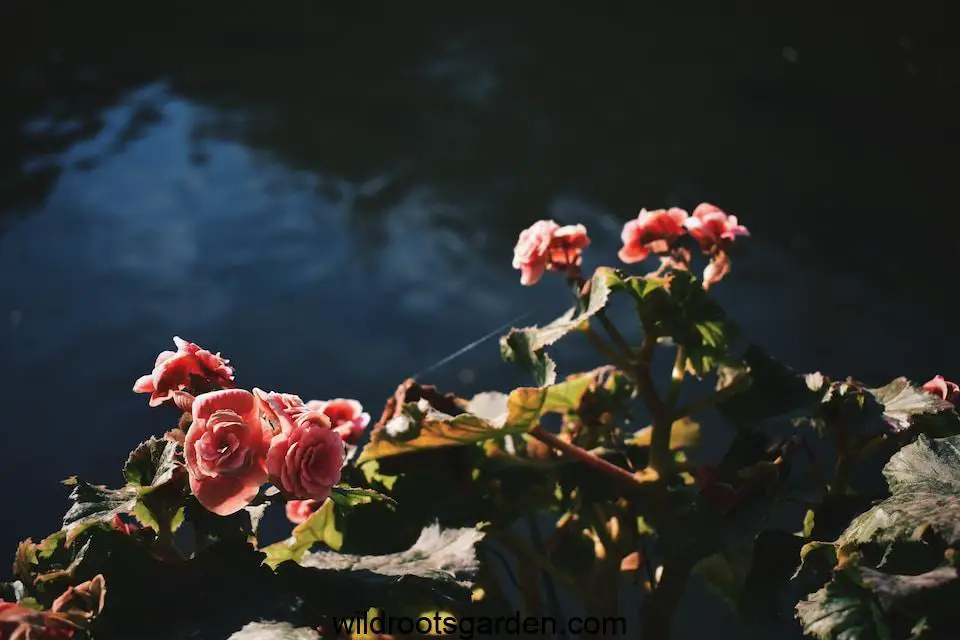Why Are My Roses Dying? Is your garden filled with wilting roses that have lost their vibrant charm? We understand the frustration of watching your beloved roses struggle but fear not – we’re here to guide you through a series of expert strategies to revive your precious blooms. Our team of horticultural enthusiasts has compiled a comprehensive guide to help you reclaim the beauty of your roses and restore them to their former glory.
Understanding the Factors Behind Wilting Roses

Understanding the causes of your roses’ deterioration is critical before we look at the revival methods. Roses can wilt for a variety of reasons, such as poor maintenance, pests, illnesses, environmental stress, and insufficient sunlight. Implementing successful solutions requires first determining the underlying issue.
Watering Woes:
- Overwatered: Imagine drowning! Like humans, roses need water, but too much can suffocate their roots, leading to wilting and fungal diseases. Water deeply and infrequently, aiming for moist soil 6-8 inches below the surface.
- Underwatered: Parched roses become stressed and weak, with leaves drooping and shriveling. Check the soil’s dryness before watering – if the top inch feels dry, give them a drink!
Soil Secrets:
- Wrong drainage: Roses crave well-draining soil like a sieve letting water flow through. Clayey soil holds water too well, causing root rot. Sandy soil drains too quickly, leaving roses thirsty. Amend clay soil with compost or mulch. Mulch sandy soil to retain moisture.
- Nutrient needs: Like athletes needing protein, roses require specific nutrients for healthy growth. Nitrogen fuels leafy greens, phosphorus aids blooms, and potassium boosts overall health. Test your soil to understand its nutrient levels and choose a balanced rose fertilizer if needed.
Pest Patrol:
- Aphids: Tiny green vampires sucking the sap from your roses, causing curled, yellow leaves. Fight back with a homemade insecticidal soap spray – a few tablespoons of liquid dish soap mixed with water.
- Spider mites: Invisible to the naked eye, these webslingers wreak havoc, leaving fine webbing and discolored leaves. Neem oil mixed with water will disrupt their feeding and reproduction.
- Thrips: Small, wingless bandits feasting on your precious buds, causing them to distort and discolor. Yellow sticky traps will lure and capture these tiny terrors.
Sunlight Savvy:
- Starved of Sunshine: Most roses crave at least 6 hours of direct sunlight daily. Shade-tolerant varieties like Zephirine Drouhin (pink climber) or Lady Banks (yellow climber) might be better suited for less sunny spots.
Pruning Precision:
- Overgrown Jungle: Pruning isn’t just about aesthetics; it promotes new growth and air circulation, vital for preventing disease. Early spring is the ideal time to remove dead, diseased, or overcrowded branches, making clean cuts at 45-degree angles above buds.
Variety Selection is Key:
- Mismatched Matchmaking: Consider your garden’s conditions when choosing roses. Shade-tolerant, cold-hardy, or heat-resistant varieties exist for almost any environment. Choose varieties suited to your soil type and climate, like Knock Out for clay soil or Belinda’s Dream for hot climates.
Remember:
- Regular inspection is key! Early detection of issues saves effort and heartache.
- Combining these tips with a little love and attention will keep your roses thriving and bring you joy for years to come!

1. Pruning and Deadheading: Nurturing New Growth
Pruning and deadheading are vital practices for promoting healthy rose growth. Regularly trim away dead or diseased branches, allowing the plant to focus its energy on new shoots and buds. Deadheading spent flowers prevents the plant from expending energy on seed production and encourages continuous blooming.
2. Soil Enrichment: Feeding for Vitality
Nutrient-rich soil is the foundation for healthy roses. To find out the pH and nutritional content of the soil, test it. Add organic matter, compost, and a balanced fertilizer to the soil to amend it and supply the nutrients for healthy growth. To avoid root rot and enhance general plant health, well-draining soil is crucial.
3. Proper Watering Techniques: Hydration is Key
Wilting roses can result from typical blunders like overwatering and underwatering. Make sure the root zone gets enough moisture by giving your roses regular, deep watering. Use mulch to maintain soil moisture and control temperature swings. For targeted and effective irrigation, think about making a drip irrigation system investment.
4. Pest and Disease Management: Vigilance is Vital
Pests and diseases can wreak havoc on rose plants. Regularly inspect your roses for signs of aphids, spider mites, powdery mildew, and other common issues. Introduce beneficial insects or use organic insecticides to control pests. Apply fungicides as a preventive measure against fungal diseases.
5. Sunlight Optimization: A Bright Future for Roses
Roses thrive in sunlight, but they also require protection from scorching heat. Plant your roses in a location that receives at least six hours of sunlight per day. Consider providing afternoon shade during intense summer heat waves to prevent stress and wilting.
6. Temperature and Climate Considerations: Adapting to Seasons
Various rose varietals prefer different temperatures. Choose rose varieties that are adapted to your climate by doing some research on the particular requirements of your kind of rose. Frost damage can be avoided by providing winter protection, such as mulching the plant’s base, which will also ensure healthy growth in spring.
7. Pristine Pruning Techniques: Shaping for Success
Proper pruning techniques are essential for maintaining the shape and health of your roses. Prune in late winter or early spring before new growth emerges. Remove dead or weak branches, focusing on creating an open center to improve air circulation. This practice reduces the risk of fungal infections and promotes vigorous growth.
FAQs About Why Are My Roses Dying
How do you revive a dying rose plant?
Don’t despair! Here’s a toolbox for revival:
Diagnose the problem: Check for watering issues (too much or too little), nutrient deficiencies, pests, diseases, or improper sunlight. Each has its signs, like wilting, yellowing leaves, or insect damage.
Address the culprit: Based on your diagnosis, take action. For overwatering, adjust your watering schedule. For nutrient deficiencies, fertilize with a balanced rose formula. Fight pests with insecticidal soap or neem oil. If it’s a disease, prune affected parts and apply a fungicide.
TLC is key: Provide proper care like deep watering, adequate sunlight (6+ hours), and good drainage. Prune dead or diseased branches. Mulch to retain moisture and suppress weeds.
Why are my rose plants dying suddenly?
Sudden death can often be attributed to environmental stress:
Extreme weather: Heat waves, droughts, or sudden freezes can overwhelm your roses. Provide extra shade or water during heat, deep water during droughts, and protect from frost with frost cloth.
Construction or landscaping changes: Disruptions to root systems can be fatal. If unavoidable, transplant carefully with minimal root disturbance.
Soil problems: Heavy clay soil that doesn’t drain well can suffocate roots, while sandy soil loses moisture quickly. Improve drainage with soil amendments like compost or gravel.
What to do when roses die?
Don’t give up! Even if parts of the plant die, there’s hope:
Identify the cause: As always, understanding the source of the problem helps guide your actions.
Prune selectively: Remove dead or diseased branches to prevent further spread and encourage new growth.
Provide extra care: Ramp up TLC – regular watering, nutrient supplements, and pest/disease control – to give survivors a fighting chance.
Consider replacement: If the entire plant is beyond saving, choose a healthier variety for your specific conditions and try again.
What makes roses die faster?
Some practices can unknowingly hasten their demise:
Improper watering: Overwatering or underwatering stresses the plant and weakens its defense against other issues. Water deeply and infrequently, aiming for moist soil 6-8 inches below the surface.
Lack of sunlight: Most roses need at least 6 hours of direct sunlight daily. Insufficient light hinders growth and makes them more susceptible to disease. Choose a sunnier location or consider shade-tolerant varieties.
Neglecting pruning: Overgrown roses lack air circulation, promoting disease and encouraging pests. Regular pruning encourages healthy growth and allows light to reach all parts of the plant.
Are roses hard to keep alive?
Roses aren’t necessarily difficult, but understanding their needs and providing proper care is crucial. Once you establish good practices and learn to identify problems early, you can enjoy vibrant blooms for years to come. Remember, rose care is a journey, not a destination!
Final Thoughts
To revive wilting roses, apply attentive care, knowledge, and dedication. Follow these strategies to revive your garden’s roses and enjoy their blooming beauty. Adapt your approach for each rose variety. With persistence and proper techniques, your roses will thrive again.

